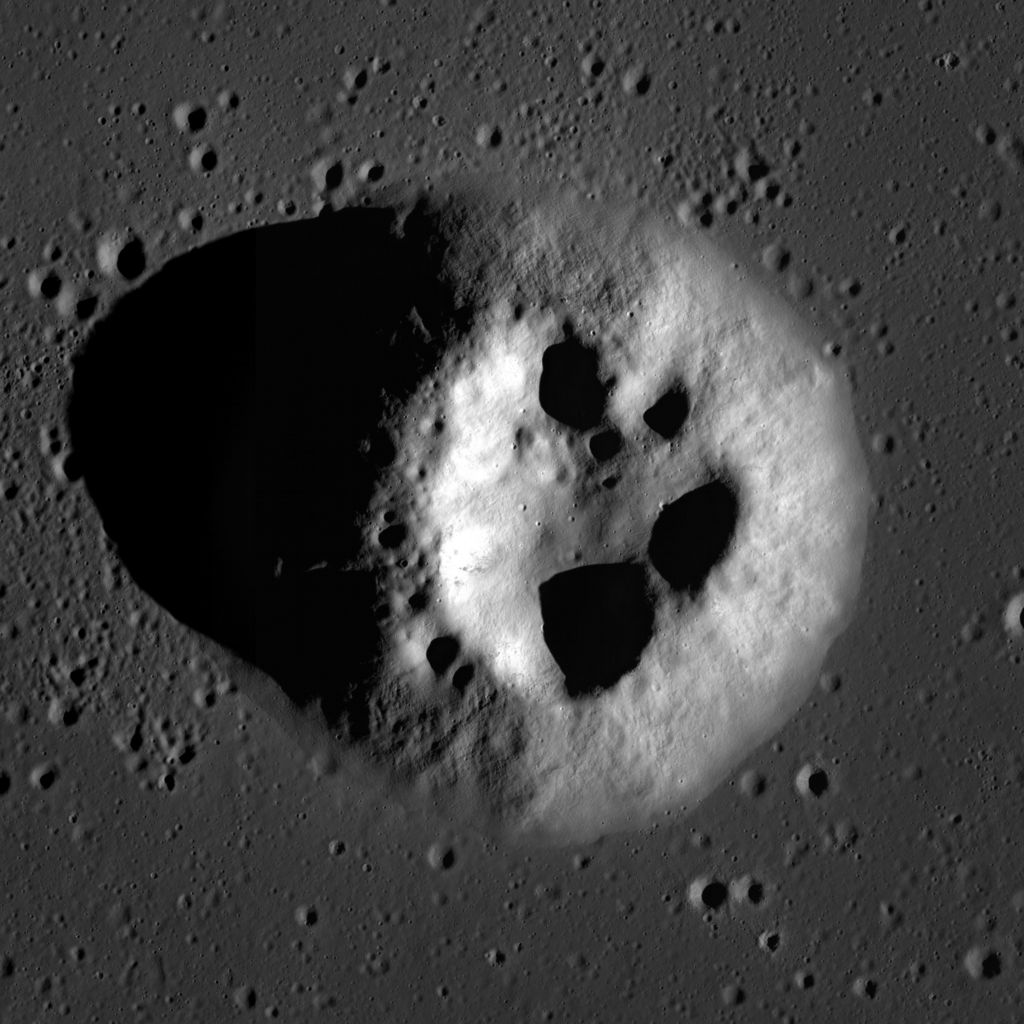The LRO mission support group has published a new image of the lunar surface. This time, Mairan T, an extinct volcano located on the visible side of the moon in the Ocean of Storms, came into the field of view of the camera of the device.

The diameter of the base of the Mairan T dome is 7 km, and the height is 800 meters. The LRO photo shows a large caldera located on its top, which diameter is 3.8 km, and the depth reaches 450 meters.
It is easy to notice that the MairaT is noticeably brighter than the surrounding surface. This is due to the fact that the plains of the Oceanus Procellarum are composed of iron-rich dark basalts, while its slopes are covered with frozen lava, which is characterized by a high content of silicon dioxide and has a higher albedo (reflectivity).
According to scientists, Maira T was formed before the Oceanus Procellarum was covered with basalt deposits, which hid all traces of the ash and dust it spewed. Its central caldera was formed as a result of the collapse of the vent in the last stages of one of the eruptions.

It is worth noting that basalt volcanism is more characteristic of the Moon as a whole. Nevertheless, traces of silicon materials were also found in the samples delivered by the Apollo expeditions. This raised the question of the mechanism of their formation for the scientist. The fact is that on Earth, silicon lava is characteristic of volcanoes of the Pacific Ring of Fire. Its formation is facilitated by special tectonic conditions and a higher water content in rocks. However, the Moon lacks both plate tectonics and water-rich sediments.
To answer this question, NASA plans to send a Lunar-VISE spacecraft to the moon. Its goal will be to study one of the Greuthuizen domes, also representing a silicon volcano. It is planned that Lunar-VISE will be delivered in 2025 by one of the private missions implemented under the CLPS (Commercial Lunar Payload Services) program.
Earlier we talked about how LRO photographed a Wrinkle Ridge.
According to https://www.lroc.asu.edu
Follow us on Twitter to get the most interesting space news in time
https://twitter.com/ust_magazine
